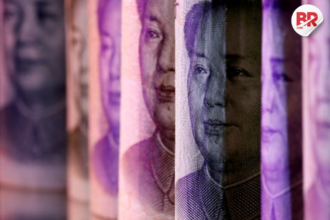
US stock markets dropped sharply on Wednesday, ending a bumpy month with new concerns about the economy and trade tensions. Investors were spooked by weak economic growth and uncertainty over President Donald Trump’s tariff plans.
The Dow Jones fell by 690 points (1.7%), the S&P 500 lost 2%, and the Nasdaq dropped the most with a 2.6% fall.

According to the Commerce Department, the US economy shrank by 0.3% in the first quarter of the year. This is a big drop from the 2.4% growth seen in the last quarter of the previous year. The decline was partly caused by a 41% jump in imports, as businesses rushed to bring in goods before possible new tariffs.
Adding to the bad news, ADP job data showed that only 62,000 new jobs were created in April. This is much lower than the 120,000 jobs that economists had expected, raising more concerns about an economic slowdown.
Read More: Investors Rejoice! Indian Stock Market on Fire with Foreign Inflows and U.S. Trade Talks!
Earlier in the month, the stock market had started to recover after a steep fall in early April, when Trump announced major new tariffs. At one point, the S&P 500 was down over 11% for April, and nearly 20% from February highs. Hopes for progress in trade talks with India helped calm investors, but Wednesday’s fall shows that market fears haven’t gone away.
Trump, posting on Truth Social, blamed the weak economic numbers on the Biden administration, and asked Americans to be patient as he works on new policies.
Some individual stocks also took a big hit:
- Nvidia dropped 4%, partly because Super Micro Computer, one of its key customers, fell 18% due to weak earnings.
- First Solar plunged over 10% after missing earnings expectations and giving a weak forecast for the rest of the year.
- Snap shares fell 16% even though its revenue beat expectations. Investors were worried because the company did not give any outlook for future performance, citing uncertain economic conditions. Snap lost 8 cents per share in the first quarter.
Overall, the combination of a slowing economy, weak job growth, and ongoing trade tensions has made investors nervous, pushing stocks lower again.












